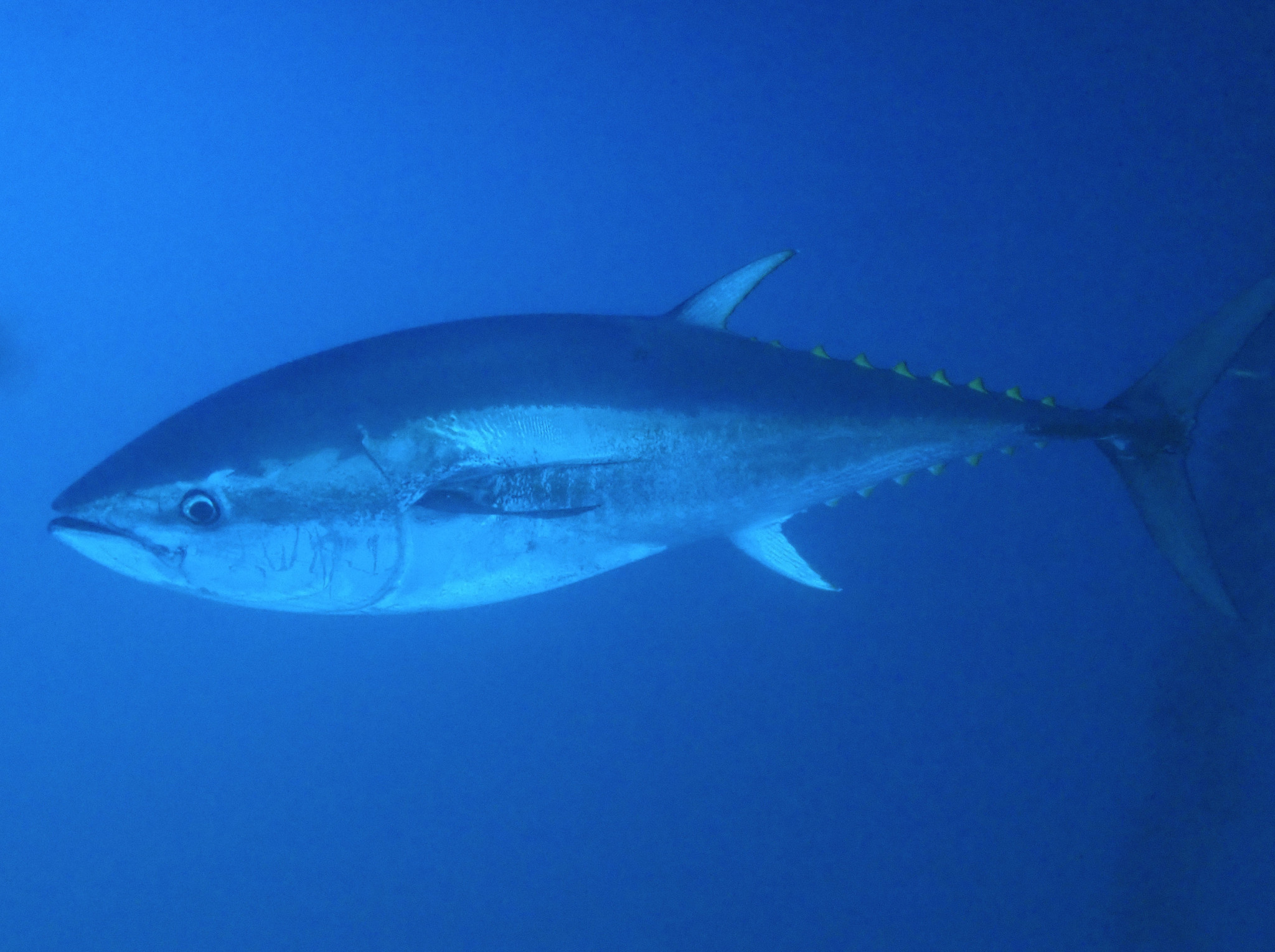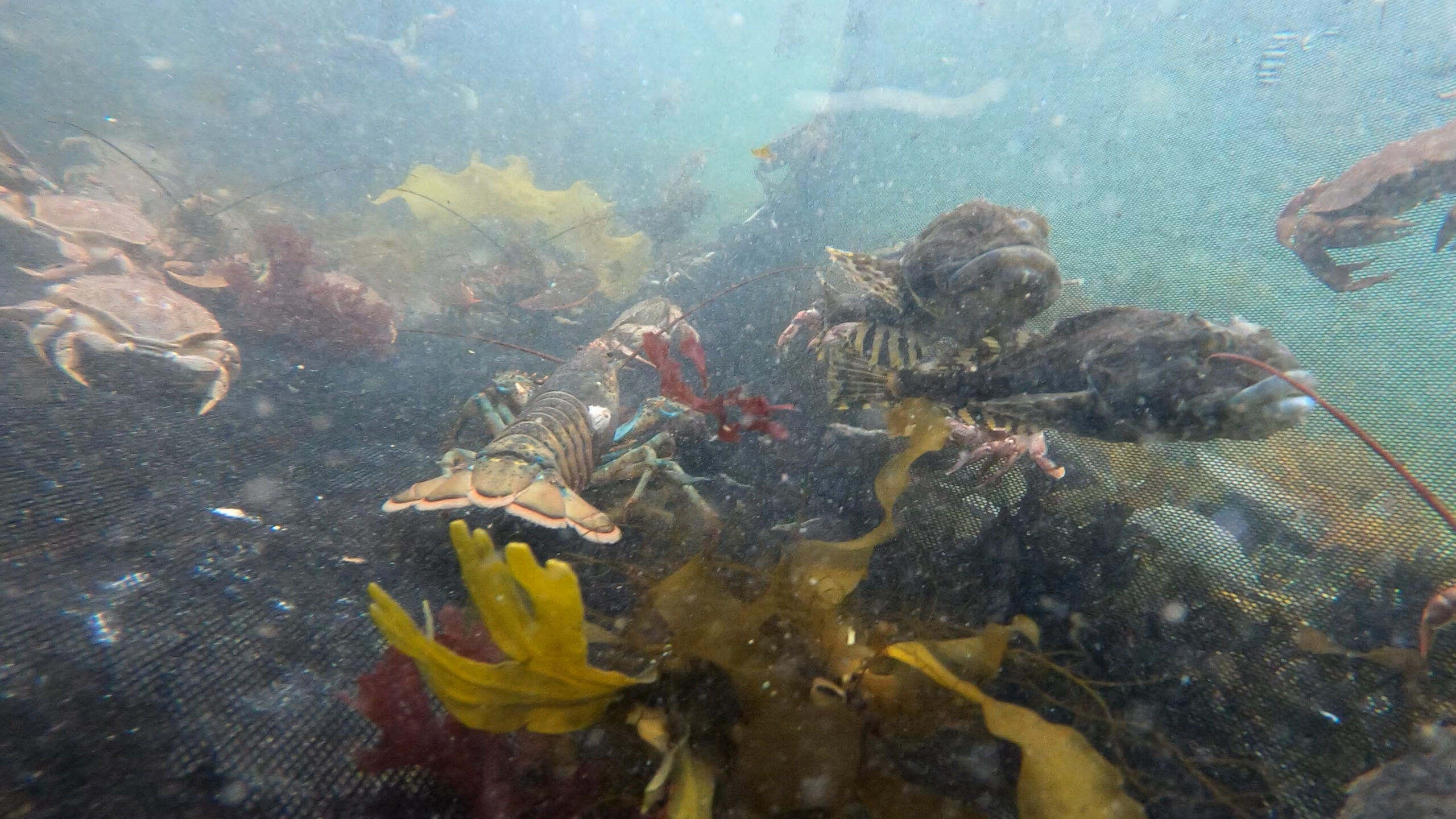
SIZE:
2 m, up to 3.1 m and 725 kg.
LIFE EXPECTANCY:
From 20 to 50 years.
LIFE CYCLE:
Spawning takes place in the Gulf of Mexico, between the months of April and June.
Each female lays between 30 and 60 million small, transparent eggs directly into the water column, close to the surface. These planktonic eggs hatch after two or three days.

Tuna tend to return to the same areas to reproduce.
Credit : Sylvain Le Bris, photo taken in 2020.
The Atlantic bluefin tuna is a large fish with a dark blue back. The colour fades toward its belly, which is silvery. Its torpedo-shaped body is perfect for speed.
Its head ends in a pointed snout. The eyes are small.
On its back are two large fins, one of which is reddish brown, followed by a series of small triangular outgrowths that give the back of the body a dented appearance. The tail is powerful and shaped like a crescent moon.
In the water column, usually between the surface and a depth of 100 m, but can reach depths of over 1000 m.
The Atlantic bluefin tuna is a highly migratory species, which travels no less than 10,000 km per year. It can tolerate wide temperature variations, from 3 to 30 °C.
During the summer, it feeds in Canadian waters, including the Gulf of St. Lawrence; it spends the winter in the Gulf of Mexico. Atlantic bluefin tuna regularly travels in shoals.
Why is tuna flesh red?
Bluefin tuna move fast and over long distances. This feat requires good muscle oxygenation, which is made possible by myoglobin, an oxygen-carrying protein that gives the fish its red colour. This is unlike salmon, whose pinkish colour comes from its diet.
PREYS:
Herring
Mackerel
Capelin
Calmar
PREDATORS:
Killer whales
Shortfin mako sharks
MACHINES:
Line fishing, electric harpoon.
REGULATIONS:
- Quotas
- Specified fishing season
- Logbook updated for each fishing trip
- Maximum number of four lines on the boat
- Maximum number of 53 boats for the Quebec fleet and regulations on their size
Although the Atlantic bluefin tuna was declared endangered because of overfishing from the 1970s to the 1990s, its acceptance to the list of species protected by the Species at Risk Act has been rejected. This is because its stock has increased slightly since the 2010s, even though its level remains very low compared to its historical levels.
Protection on all fronts
As bluefin tuna travel great distances, they can be found from one side of the Atlantic to the other. In 2022, the International Commission for the Conservation of Atlantic Tunas set up a new management procedure to account for stocks on both the western and eastern sides of the Atlantic Ocean (America and Europe). This should lead to a more sustainable approach to fishing.
Atlantic bluefin tuna is a Smarter seafood-listed species.
BENEFITS:
Atlantic bluefin tuna is rich in omega-3 fatty acids, phosphorus, potassium, magnesium, vitamins A and B12.
LET’S COOK:
Firm texture, red flesh. Rich, flavourful taste.
It is not uncommon to speak of tuna “steak,” a reference to its meat-like texture and colour.
OUR CULINARY ADVICE:
- When buying tuna, it is important to check its Latin name. Given its endangered status, we do not recommend eating it if it is Thunnus thynnus, which comes from the westernest Atlantic. It is best to consume eastern Atlantic tuna, although in great moderation.
Blame it on sushi
The development of the tuna sushi and sashimi market in Japan in the 1980s led to an increase in tuna fishing, although a bit excessive.






